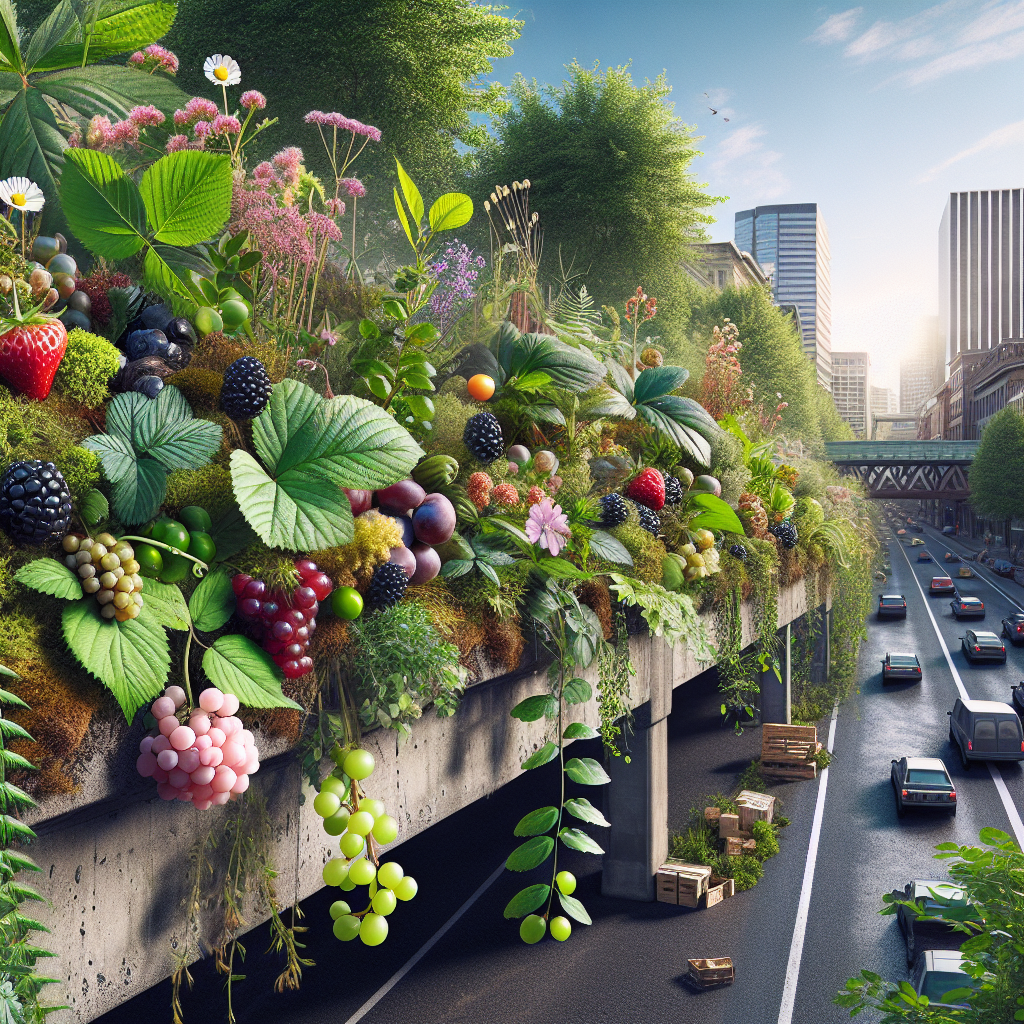A Stroll into Urban Foraging in Portland: Discover the City’s Edible Bounty
With its organic grocery stores, farmers markets, and eclectic restaurants, Portland is known for its food culture. But did everyone also know that it’s also home to an abundant spectrum of edible wild plants just waiting to be foraged? The following guide offers advice on how to feast on the incredible flavors hidden throughout the city streets.
Seasonal Adventures in Foraging
When people think of Oregon, they might conjure up images of rain-slicked streets and the heavy fog of the Willamette River—a climate perfect for mushroom foraging. It’s true that the fall sees a bloom of culinary treats in the damp loamy soil under the fir trees. Chanterelles in particular thrive in the wet conditions at places like the Tualatin Hills Nature Park, easily identifiable by their golden hue.
However, while mushrooms have had their deserved spotlight, foraging in Portland goes way beyond the autumn bolete hunt. Summer months bring an explosion of edible plants. Elderflowers sprout along the Columbia River Gorge, their delicate, white blooms making for a sweet and fragrant cordial. Oregon grape is another summer gem that provides juicy berries that are perfect for jams, pies, or just a delightful summer snack.
Forage Responsibly with Local Foraging Workshops

Anyone ready to venture into urban foraging should consider enrolling in a local workshop. Not only can the wrong plant spoil a meal, but it can have serious health implications, and nobody wants to end up at St. Vincent’s Hospital with food poisoning. The folks over at Rewild Portland run excellent classes on how to correctly identify local plants, and which ones to avoid.
Above all, remember the foragers’ code: Leave no trace behind. Only take what’s needed, allowing Mother Nature to rejuvenate for the next season. Harvest fruit when it’s ripe, and avoid damaging the plants or the surrounding environment.
The Hidden Edibles Undecidedly in Plain Sight
With numerous parks scattered throughout Portland, the bounty of urban foraging is closer than one might think. Dandelion greens, a spring favorite, can often be spotted at community parks like Laurelhurst. They are excellent additions to a nutritious salad, but remember, if a park is well-loved by local dog walkers, that dandelion might not be the one to pick.
An urban foraging treasure trove lies in the lower NE Portland. The Alberta Community Orchard, hid between neighborhood houses, hosts apple and pear trees that bear fruit into the autumn season. In NW, hidden beneath the St. Johns Bridge, Cathedral Park is home to a wealth of blackberry bushes ripe for the picking in the late summer months.
Please note, before foraging in public parks, always inquire about local codes or contact the Parks and Recreation department for permission. If unsure, ask. Park rangers aren’t as scary as they seem and are usually happy to provide advice.
Don’t Shy Away from On-The-Go Foraging Opportunities
There is an underappreciated charm in stumbling across an unexpected foraging find. Perhaps it’s a rogue apple tree down an unknown path on a Powell Butte Nature Park trail or stinging nettles hiding along the banks of the Clackamas River. Keep alert while out and about; foraging isn’t confined to woodlands and doesn’t require extensive plans. Just remember to have a foraging bag handy, and a field guide doesn’t hurt either.
Conclusion: Greet the Urban Jungle with New Eyes
Remember that foraging in Portland is more than just about gathering food; it’s about deepening connection to the city and its green spaces. It’s about appreciating that little bit of wild that has survived amidst the urban development. It’s about discovering the promise resting on the branch of a cherry tree at Hoyt Arboretum, or the joy of a juicy blackberry picked straight off the bushes by the Springwater Corridor. It’s the giddy excitement of the seasonal shift, determining whether it’s camas baking time over at Oaks Bottom Wildlife Refuge or filbert harvest season at Leach Botanical Garden.
That’s the beauty that comes with foraging in the city: one doesn’t need a sprawling forest or an expensive ticket to the wilderness. The flavors of the great outdoors are right outside the doorstep, intermingled with the aroma of coffee roasts and bakery delights emanating from the Pearl District.
So, give it a shot. The next time anyone’s out on a walk, take a closer look around. Who knows? There could be an edible treasure just waiting to be discovered in the streets of Stumptown.
